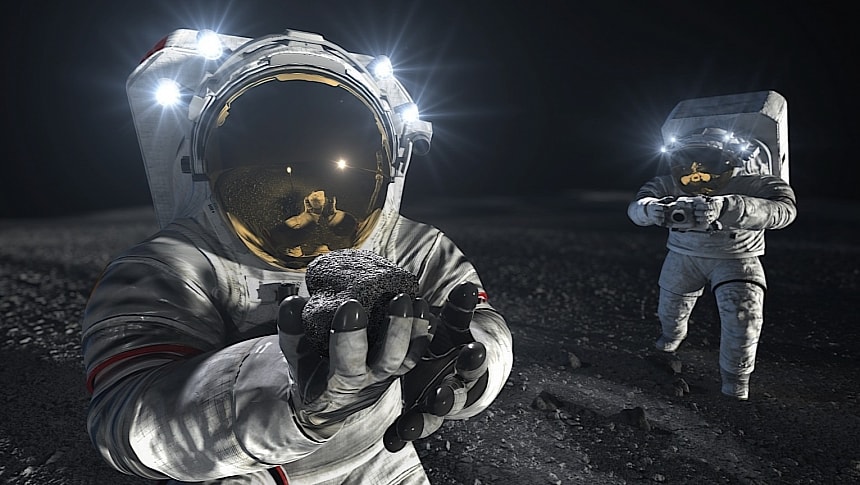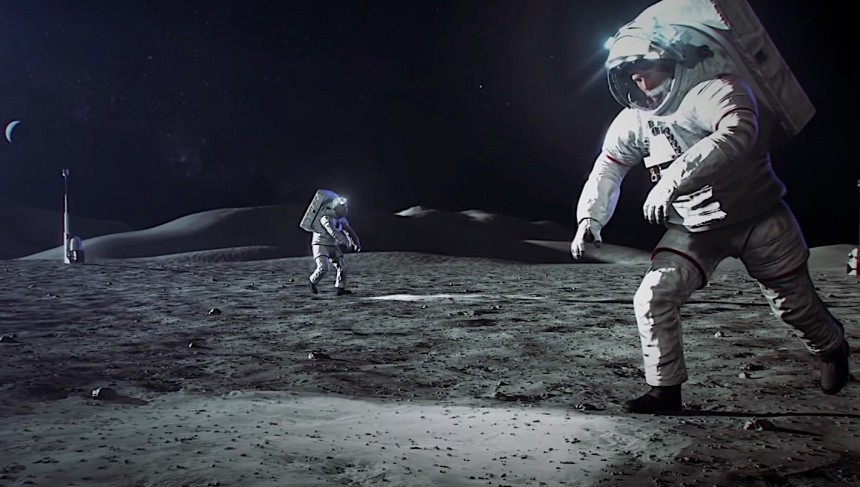Even if the American space agency postponed the launch of the second and third Artemis missions by one year (meaning we won't have a Moon landing before 2026 at the soonest), they are still happening, and when they do humans would have returned to the satellite for the first time in more than 50 years. And unlike what happened with Apollo, they will be carrying with them a wealth of brand-new equipment. Including, naturally, a handheld camera.
Back in the days of the Apollo program, a handheld camera was what gave us those incredible images of the Moon's surface. In all, NASA says its astronauts have managed to snap over 18,000 photos of the Moon and their own activities there.
Because it was a tool of the 1960s and 1970s, the camera might have been exactly what was needed back then, but it is not nearly close to what it is required now. For instance, the damn thing didn't even have a viewfinder, meaning astronauts had to take photos with the camera attached to their suits, at chest level. Also, photos needed to be snapped with one camera, and video with another.
That will change as soon as humans once again set foot on the Moon once the Artemis III mission gets there. Because NASA will be sending its astronauts up with all the gear they need, including a fancy new handheld camera.
The device is being developed by NASA's Marshall Space Flight Center together with Japanese company Nikon, and will use existing and proven tech, including viewfinders. And it is being built to survive the extreme environment the astronauts are expected to encounter on the Moon, including temperatures and lighting conditions.
NASA says it decided to go with Nikon on this after giving the Z 9 camera developed by the Japanese a go. That's a full-frame mirrorless camera that can snap photos at a resolution of 45.7 megapixels, it comes with autofocus and continuous shooting functions, and, naturally, supports 8K video.
The Z 9 was used by NASA to determine what the exact specifications of a Moon camera would need to be, and the device seems to have been impressive enough for the agency to tap Nikon for making a design.
The device that is now being developed by the two partners is called HULC, which is an acronym for the Handheld Universal Lunar Camera. It is based on a Nikon Z 9, heavily modified in terms of electrics and imagery tech, and rocking Nikkor lenses.
NASA did not reveal the full specifications of the camera, but it did give us an insight into what it really takes to develop such a tool for operation on the surface of a piece of rock other than Earth.
To make sure the camera survives the extreme temperatures but also the very damaging dust on the Moon, HULC will be encased in a thermal blanket. Astronauts will hold on to it using a custom grip that in turn holds buttons modified to be easily operated by a hand wearing an astronaut suit glove.
As the first-ever handheld mirrorless camera to be deployed on another world, the HULC will be able to snap images of the place even in low-lighting conditions. It will, of course, be good to snap both stills and video, representing a major step forward from what was used before, during Apollo.
So, where are we with the development of the HULC? NASA announced at the end of last month that thermal, vacuum, and radiation testing on the device had begun. More to the point, NASA people dressed like astronauts are using the camera to snap images on a simulated Moon surface over in Arizona. Separately, people from the European and Japanese space agencies are doing the same in Lanzarote, Spain, where geology training is taking place.
The biggest hurdle for the piece of technology will come during something called the Joint Extravehicular Activity and Human Surface Mobility Test Team Field Test #5. That's an analog mission scheduled to take place in Arizona to simulate more moonwalks and procedures.
When it feels confident enough that it has what it takes, NASA will send HULC to the International Space Station (ISS) for further testing, and after that, it will get its real field use during the Artemis III mission.
That's the flight that will put the first humans boots on the surface of the Moon under the new exploration program. The names of the astronauts for Artemis III have not yet been announced, but we do know a lot about the mission's profile.
Four people, including a person of color and a woman, will board the Orion spacecraft and head out into space and to the Moon, where they will spend about a month doing science the likes of which humans have never done directly on an alien world.
Because it was a tool of the 1960s and 1970s, the camera might have been exactly what was needed back then, but it is not nearly close to what it is required now. For instance, the damn thing didn't even have a viewfinder, meaning astronauts had to take photos with the camera attached to their suits, at chest level. Also, photos needed to be snapped with one camera, and video with another.
That will change as soon as humans once again set foot on the Moon once the Artemis III mission gets there. Because NASA will be sending its astronauts up with all the gear they need, including a fancy new handheld camera.
The device is being developed by NASA's Marshall Space Flight Center together with Japanese company Nikon, and will use existing and proven tech, including viewfinders. And it is being built to survive the extreme environment the astronauts are expected to encounter on the Moon, including temperatures and lighting conditions.
NASA says it decided to go with Nikon on this after giving the Z 9 camera developed by the Japanese a go. That's a full-frame mirrorless camera that can snap photos at a resolution of 45.7 megapixels, it comes with autofocus and continuous shooting functions, and, naturally, supports 8K video.
The device that is now being developed by the two partners is called HULC, which is an acronym for the Handheld Universal Lunar Camera. It is based on a Nikon Z 9, heavily modified in terms of electrics and imagery tech, and rocking Nikkor lenses.
NASA did not reveal the full specifications of the camera, but it did give us an insight into what it really takes to develop such a tool for operation on the surface of a piece of rock other than Earth.
To make sure the camera survives the extreme temperatures but also the very damaging dust on the Moon, HULC will be encased in a thermal blanket. Astronauts will hold on to it using a custom grip that in turn holds buttons modified to be easily operated by a hand wearing an astronaut suit glove.
As the first-ever handheld mirrorless camera to be deployed on another world, the HULC will be able to snap images of the place even in low-lighting conditions. It will, of course, be good to snap both stills and video, representing a major step forward from what was used before, during Apollo.
The biggest hurdle for the piece of technology will come during something called the Joint Extravehicular Activity and Human Surface Mobility Test Team Field Test #5. That's an analog mission scheduled to take place in Arizona to simulate more moonwalks and procedures.
When it feels confident enough that it has what it takes, NASA will send HULC to the International Space Station (ISS) for further testing, and after that, it will get its real field use during the Artemis III mission.
That's the flight that will put the first humans boots on the surface of the Moon under the new exploration program. The names of the astronauts for Artemis III have not yet been announced, but we do know a lot about the mission's profile.
Four people, including a person of color and a woman, will board the Orion spacecraft and head out into space and to the Moon, where they will spend about a month doing science the likes of which humans have never done directly on an alien world.
















